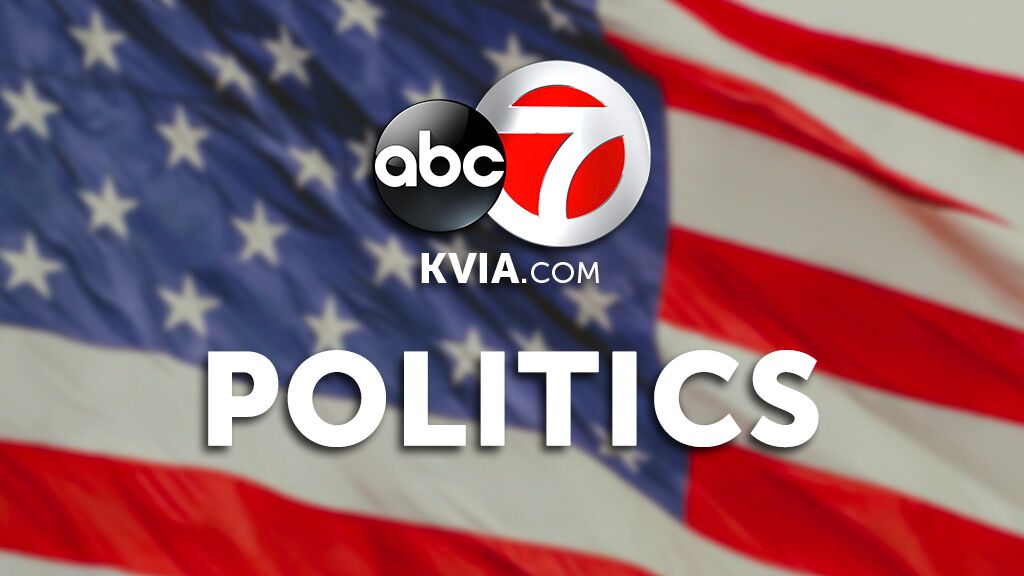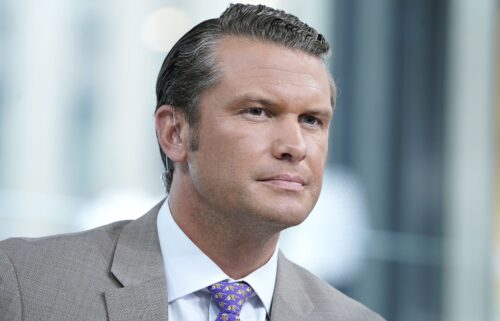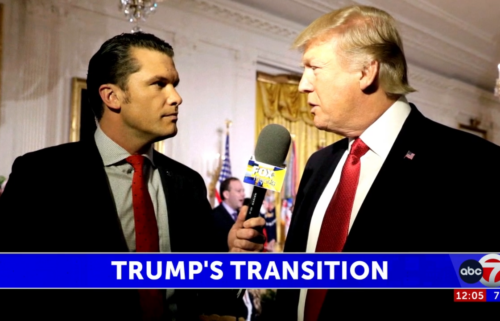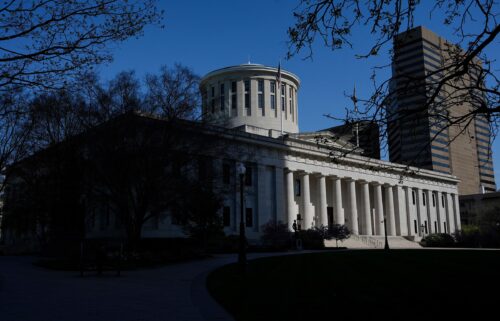White House expands federal vaccine programs, taking more control of coronavirus vaccination efforts

The Biden administration has ramped up its role in distributing and administering coronavirus vaccines, boosting federal pipelines in recent months with more doses and more vaccination sites in preparation for mounting US supply and the next phase of the US vaccination campaign.
As the US officially entered that phase on Monday — with every person 16 years and older now eligible to be vaccinated — Biden administration officials said they estimate that 90% of Americans now live within five miles of a vaccination site as a result of the expanded federal channels. Nearly 40,000 pharmacies are now equipped to put shots in arms through a direct-to-pharmacy federal vaccine program, up from just a few thousand when the program launched two months ago.
Altogether, the federal vaccine pipeline — which includes the retail pharmacy program, three-dozen federally run mass vaccination sites and 1,470 federal health centers — is now handling more than a third of doses being shipped out every week, more than tripling its share of weekly doses since early February.
The shift gives the White House more control in determining how fast, where and to whom shots are being administered, a process that has largely been exclusively run by governors and local officials who receive per-capita dose allocations from the federal government.
Senior Biden administration officials said the expanded federal pipeline helps ensure the infrastructure is in place to handle a growing volume of doses and that shots are being doled out more equitably. While the US is still struggling with racial equity in vaccination — with minorities underrepresented among the vaccinated — the federal channels are outperforming the national average, according to data provided by the White House.
“We want to make sure … as we track toward this moment that we’re ready to have the scale that we need,” said Sonya Bernstein, a senior policy adviser on the White House’s coronavirus response team. “This is an unprecedented scale ahead of us and so we want to make sure we’re supporting states and localities and making sure we’re getting shots in arms rapidly, just as we’re trying to do that equitably.”
Biden administration officials touted the success of those federal channels — in terms of the speed of vaccination and their ability to hit equity goals — but say they are not trying to wrest control of the vaccination process from states. Several state officials told CNN they agree the federal channels are a value add, but some of those same officials are wary of the White House taking control of a larger share of vaccine dose allocations and believe they remain best positioned to maximize vaccinations in their own states.
“I think it’s a good balance, but I wouldn’t want to see it shifted anymore,” said Arkansas Gov. Asa Hutchinson, a Republican who’s vice chairman of the National Governors Association. “I wouldn’t want to shrink the states’ role any more than it is now, I wouldn’t want to shrink the states’ allocation.”
Biden administration officials declined to project what the breakdown will be going forward between the federal and state vaccine channels, calling it a “week to week” decision.
But what’s clear is the White House sees pharmacies as a key part of the path to getting Americans vaccinated and overcoming the pandemic, and the expansion of the federal pharmacy program is part of a shift in which Americans are increasingly getting their shot outside of mass vaccination sites.
Officials said the federal pharmacy program is more efficient at getting shots in arms, administering 86% of delivered doses, compared to a national average of 78% of doses administered, according to figures provided by the White House. Nearly 36 million doses have been administered through the program since the second week of February, when it launched.
The White House has also taken note of surveys that indicate Americans prefer to be vaccinated at a pharmacy or a doctor’s office and making doses available at familiar, nearby locations could help overcome some vaccine hesitancy concerns.
“Our pharmacies aren’t just empty spaces. They have pharmacists who are — in a lot of communities — huge sources of information about medications and treatments and therapies and even vaccines,” said Dr. Cameron Webb, a senior policy adviser for equity on the White House coronavirus response team. “By connecting people with a space that they — often for a lot of people — that they associate with vaccination helps normalize this process of vaccination.”
While states are also transferring some of the doses they receive to local pharmacies, the federal pharmacy program puts the Biden administration in the driver’s seat in determining where doses are being administered in an attempt to make vaccination more representative of the US’s demographic makeup.
To date, Black and Hispanic Americans have gotten vaccinated against the coronavirus at lower rates than their share of the population. Of those who have gotten at least one dose of the vaccine, just 11.5% are Hispanic and 8.5% are Black, according to US Centers for Disease Control and Prevention data, even though they make up 17.2% and 12.4% of the US population, respectively.
Using the federal pharmacy program, the administration has pushed doses closer to the most socially vulnerable populations, with nearly half of the first 30,000 participating pharmacies located in zip codes classified in the highest category of the CDC’s Social Vulnerability Index, which classifies communities based on more than a dozen socioeconomic factors.
The pharmacy program narrowly bested national racial demographic averages, with 38% of individuals vaccinated through pharmacies identifying as non-White, according to an administration official, compared to 35% nationally.
While the retail pharmacy program handles the overwhelming majority of doses distributed through the federal pipeline, 3.5 million doses have also been administered through three-dozen federally run mass vaccination sites in 26 states.
By setting up those sites closer to socially vulnerable populations and by working with community groups, the Federal Emergency Management Agency-run mass vaccination sites have helped improve equity targets.
FEMA officials said 58% of vaccine doses at those sites have been administered to non-White individuals, compared to 35% on average nationwide.
Acting FEMA Administrator Robert Fenton said his agency achieved those figures by setting up those sites closer to socially vulnerable populations and working with community-based organizations to get the word out. He plans to share best practices with state officials and said the lessons learned at federally run sites will inform vaccination strategies at the more than 1,000 state-run mass vaccination sites that the federal government supports through either staff or resources.
“Just simply opening up vaccination sites and allowing anyone that can register, register, doesn’t always focus on those that are maybe the most socially vulnerable or at risk,” Fenton said in an interview, pointing to some sites that allowed individuals in certain zip codes to pre-register for access.
A third, smaller federal pipeline — to federally qualified health centers — targets minority communities even more directly, administering about 70% of shots to non-White individuals, according to the White House.
As the White House has worked to scale up the federal vaccine pipeline, senior Biden administration officials said they have worked closely with states to ensure they are not duplicating efforts, with CDC officials coordinating with state health officials to decide which pharmacy partners to bring online.
Mandy Cohen, the North Carolina secretary of health, said that to ensure vaccines are appropriately spread across her state, she has at times shifted doses away from areas with a higher concentration of federal pharmacy partners, like Walgreens, for example.
Dr. Nirav Shah, the Maine Center for Disease Control and Prevention director, described similar decision-making in his state and coordination not just with the CDC but directly with the federal pharmacy partners.
“The pharmacy supply is complementing, not competing with the state supply,” Shah said. “We have been able to work with them to activate certain stores first and hold on other ones in areas that we didn’t have any need.”
While the federal pharmacy program is on average more efficient at getting shots in arms, a different picture emerges in certain states like Arkansas, where Hutchinson said the federal pharmacy program has underperformed.
“I would not say we ought to reverse course,” Hutchinson said. “But if we had to start it all over again, I would have kept (all the doses) within the state, because we could utilize all those federal partners within our own allocation.”
A senior Biden administration official pointed to data showing the federal pharmacy program is on the whole more efficient, but said, “If there are places where the pharmacy program is not moving supplies as quickly as the states are, we should expect to see that change.”
As administration officials have built out the federal pharmacy program, they have used the two-month process as an opportunity to troubleshoot common problems, streamlining supply chain efforts, ensuring pharmacies have the cold storage capacity they need for certain vaccines and even ensuring that pharmacies are appropriately increasing staffing at certain pharmacies to meet demand.
While the federal government is currently allocating doses to pharmacies based on the population of those states, a senior administration official said they plan to become more flexible going forward, requiring only 80% of doses be distributed on a per-capita basis.
And while all individuals 16 years and older are now eligible to be vaccinated, federal channels could still be a way for the White House to meet certain goals and ensure mass vaccination is happening equitably. Some pharmacies in the federal program, for example, are reaching out to high-risk patients to tell them when the vaccine is available at their pharmacy. Others have partnered with ride-sharing companies to get underserved populations to pharmacies.




